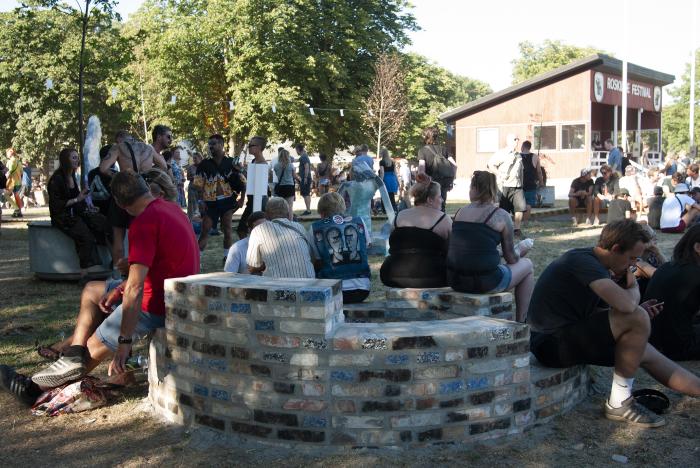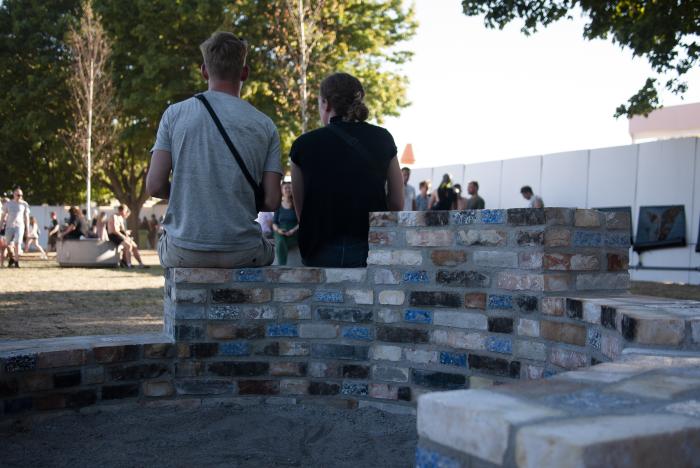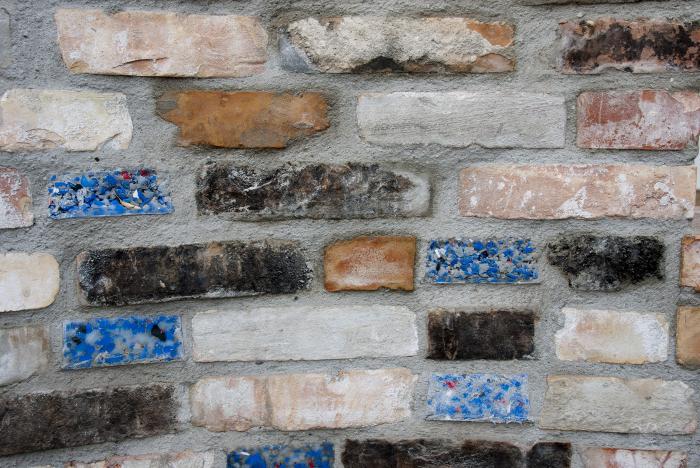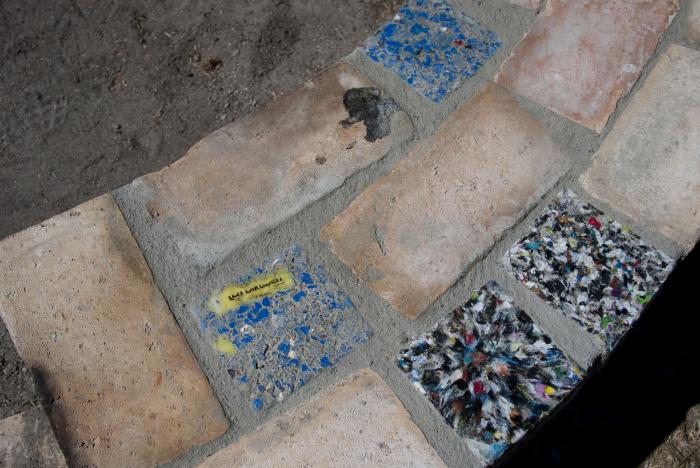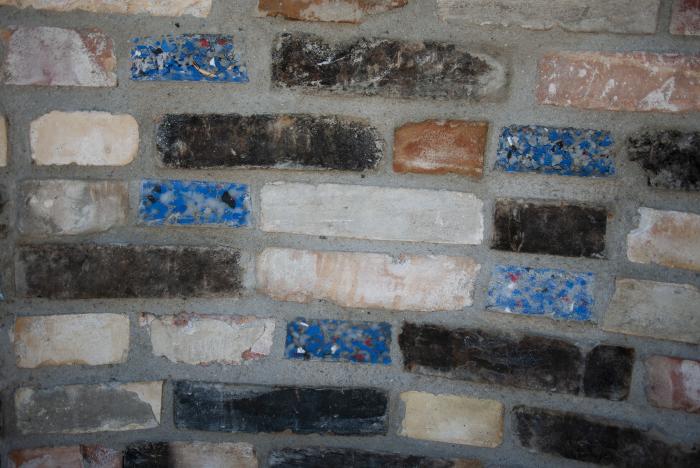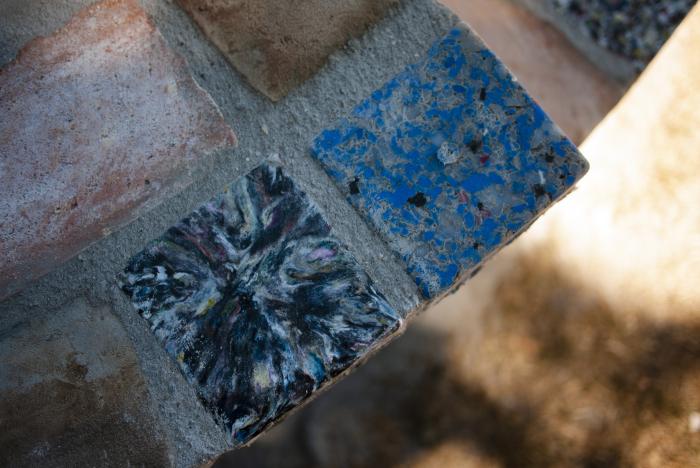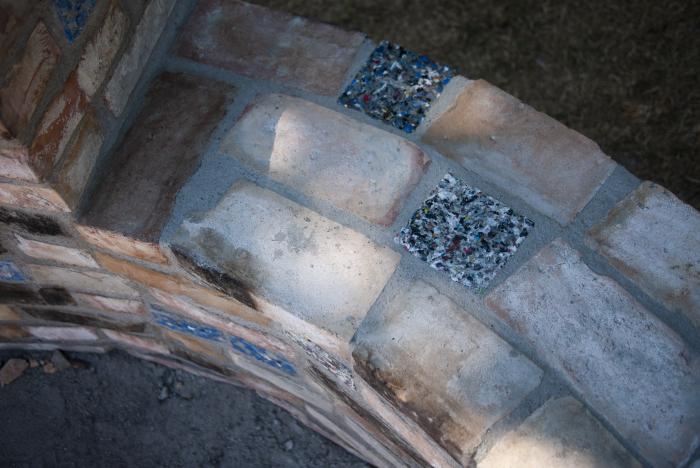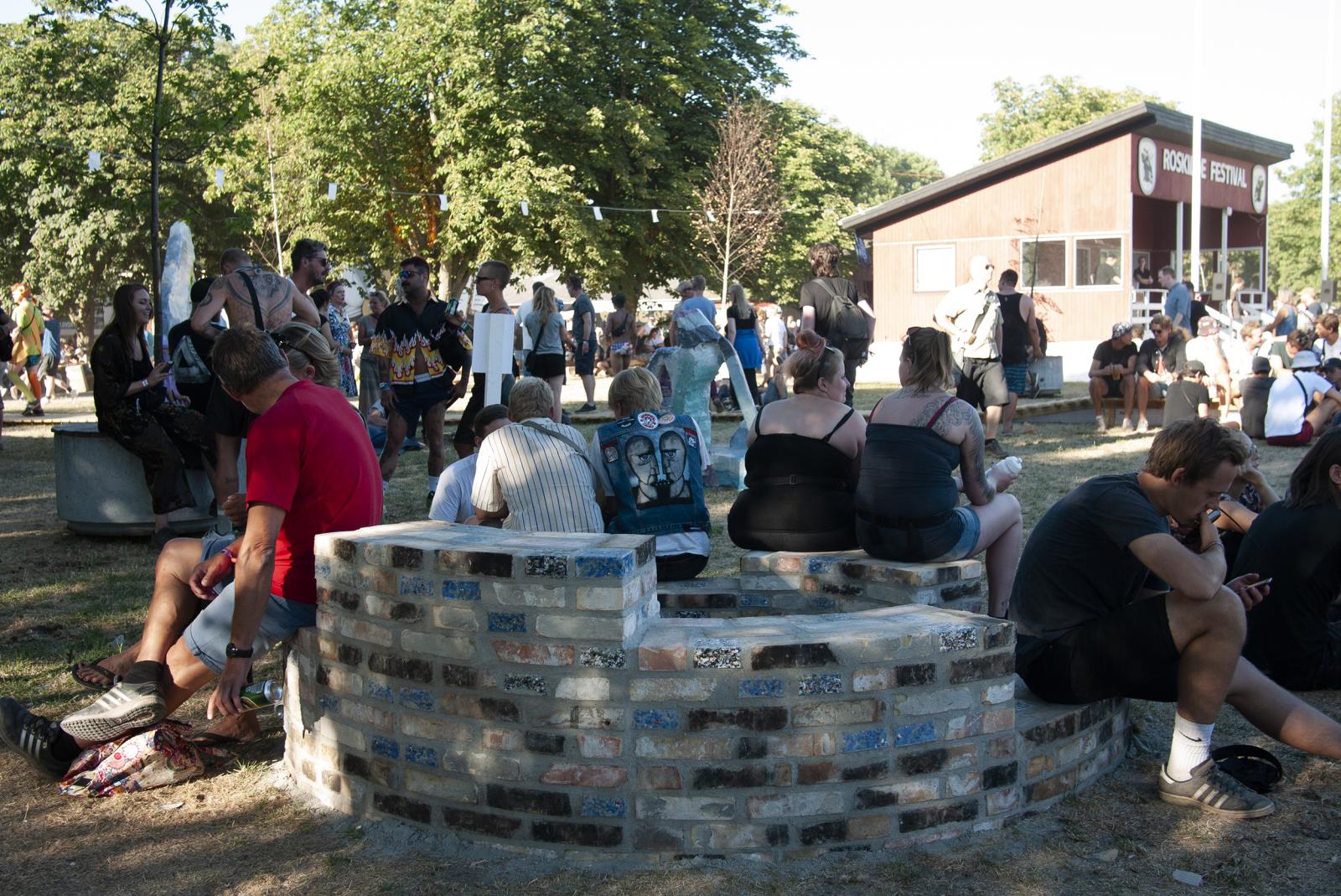 Plastiglomerate, 2018, sculpture 2,5 m ⌀, reclaimed bricks and plastic bricks
Plastiglomerate, 2018, sculpture 2,5 m ⌀, reclaimed bricks and plastic bricks
Plastiglomerate, 2018
Plastiglomerate was part of Art Zone, Roskilde Festival 2018 as part of The Bikuben Foundation's studio programme. Plastiglomerate was supported by Bikuben Foundation, Denmark.
Pastiglomerate (2018), was a sculpture constructed with reclaimed bricks from an old chimney and new produced plastic bricks of recycled plastic from Dansk Affaldsminimering Aps. The plastic bricks were developed in collaboration with scientist Yang Zhang and a team of her students at DTU, Copenhagen, Denmark. Plastiglomerate is inspired by the recent geological phenomenon with the same name. Geologists Patricia L. Corcoran, Charles J. Moore and artist Kelly Jazvac were the first to register the plastiglomerate at Kamilo Beach in Hawaii 2012. It was coined ‘plastiglomerate’ and categorized as a new stone type as well as the first material evidence of the Anthropocene. The plastiglomerate consists of waste polymers from oceans and natural sediments. Plastic that washes up on the coast mixes together with sand, shells and driftwood. It’s speculated that the plastic melts because of bonfires held on the beach and then fuses with natural sediments. Scientists define plastiglomerate as “an indurated, multi-composite material made hard by agglutination of rock and molten plastic”.
The construction drawings were made by Benjamin Wells and the sculpture build by Casper Bojsen.
EXCERPT FROM THE TEXT BY LENE STEINBECK: PLASTIKALDEREN
Naturen har skabt en ny stenart: Plastiglomoraten. En sten, der består dels af organisk materiale dels af plastik. Kunstneren Veronika Geiger vil gerne sætte fokus på plastikforurening og udstiller i Art Zone et kunstværk, der er centreret om plastiglomoraten. For syv år siden stødte en gruppe amerikanske geologer på en ny stenart. Den blev fundet på Kamilo Beach, Hawaii, og den fik navnet plastiglomorat. Naturen har selv skabt plastiglomoraten af naturlige sedimenter og plastik. Forskere og geologer er lidt i tvivl om hvordan, men en teori er, at høj varme får plastikken, der skyller op på verdens strande, til at smelte sammen med sand.
Plastiglomerate er muret op af traditionelle mursten fra en 100 år gammel skorsten og af helt nye plastikmursten. Plastikmurstenene har Veronika selv været med til at lave i samarbejde med senior researcher Yang Zhang og en gruppe kandidatstuderende på DTU. De har eksperimenteret med at finde den helt rigtige blanding af sand og plastik. Derefter blev der tilført hydraulisk tryk og høj varme. Plastikmurstenene er blevet testet for at se, om de kan opnå en lignende holdbarhed og bæreevne som sten. Men dertil er et stykke vej endnu.
Der er i høj grad brug for at lytte til nye tanker og ideer om, hvordan plastik genanvendes, mener Veronika Geiger. ”Og på det punkt har vi ikke tiden foran os. Det kan kun gå for langsomt.”
